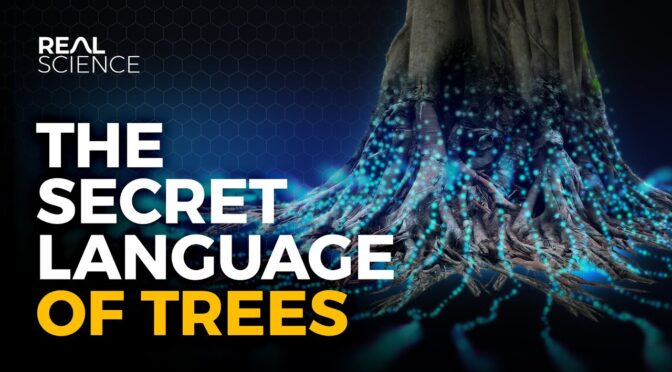This article is based on a video titled “The Secret Language of Trees” by Real Science. The video delves into the fascinating world of tree communication, a subject that has long been overlooked but is now gaining attention for its ecological significance. The video reveals that trees are not solitary beings but rather part of a complex, interconnected network that allows them to share resources and information. This network, facilitated by soil fungi, challenges our traditional understanding of trees as competitors rather than collaborators.
Contents
- The Mycorrhizal Network
- Resource Sharing
- Chemical Signals
- The Role of Mother Trees
- Implications for Agriculture and Climate Change
- Personal Responsibility and Sustainable Choices
- The video
The Mycorrhizal Network
The video introduces us to the concept of the mycorrhizal network, a symbiotic relationship between soil fungi and tree roots. This network allows trees to share essential nutrients like phosphorus and nitrogen, which are absorbed by the fungi and transferred to the trees. In return, the trees provide the fungi with photosynthate, the sugars they produce through photosynthesis. This mutualistic relationship is not just limited to individual trees and fungi; it extends to a vast underground network that connects entire forests (it’s almost like the trees have their own version of the internet).
Resource Sharing
Research has shown that trees can share resources not only with fungi but also with other trees, even those of different species. For instance, experiments involving Douglas fir and paper birch trees revealed that these species could share carbon and nitrogen, depending on the environmental conditions. This finding challenges the traditional evolutionary view that trees are purely competitive beings, forcing scientists to reconsider the role of cooperation in tree evolution.
Chemical Signals
Trees can also send chemical signals through the mycorrhizal network to warn neighboring trees of impending dangers like insect attacks. Experiments with tomato plants showed that when some plants were infested with leaf-chewing caterpillars, their healthy neighbors activated defense-related genes within six hours, preparing for the potential threat. This suggests that trees can communicate danger and prepare for it collectively, enhancing the forest’s overall resilience.
The Role of Mother Trees
The video highlights the importance of “mother trees,” the oldest and largest trees in a forest that serve as the primary nodes in the mycorrhizal network. These mother trees are crucial for the survival and health of the forest, as they share excess resources with younger trees and help them grow. Unfortunately, these are often the trees that are targeted in logging activities, which can disrupt the entire network and lead to a decline in forest health.
Implications for Agriculture and Climate Change
Understanding the mycorrhizal network has far-reaching implications, not just for forest conservation but also for agriculture. Most staple food crops form relationships with mycorrhizal fungi, which could reduce the need for artificial fertilizers if the soil conditions are favorable for the fungi. This could be a sustainable solution to some of the environmental challenges posed by modern agriculture.
Personal Responsibility and Sustainable Choices
The video concludes by emphasizing the importance of individual actions in mitigating environmental impact. While large-scale changes are necessary, small steps like reducing food waste can also make a significant difference.

